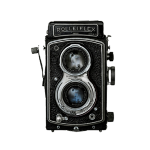Exposure Calculator
Calculate the perfect exposure settings with aperture, shutter speed, and ISO combinations
Understanding Exposure
Photography exposure is determined by three key elements: aperture, shutter speed, and ISO. These three settings work together to create what photographers call the "exposure triangle."
This calculator helps you understand and balance these three elements to achieve perfect exposure for any scene. Whether you want to calculate one setting based on the others or simply check your exposure value (EV), this tool has you covered.
- Aperture controls the amount of light entering through the lens (f-stop) and affects depth of field
- Shutter Speed determines how long the camera sensor is exposed to light and affects motion blur
- ISO controls the sensitivity of your camera sensor to light and affects image noise
Understanding how these elements interact is key to mastering manual exposure in photography.
Note: This calculator provides theoretical exposure settings. Actual results may vary based on:
- Camera metering system
- Subject reflectivity
- Specific lighting conditions
- Personal creative choices
Always check your histogram and adjust as needed for the best results.
Exposure Tips
Creative Control with Aperture
- Wide apertures (f/1.4 - f/2.8): Shallow depth of field, great for portraits and isolating subjects
- Medium apertures (f/4 - f/8): Balanced depth of field, ideal for most general photography
- Narrow apertures (f/11 - f/22): Deep depth of field, perfect for landscapes and architecture
Shutter Speed Techniques
- Fast speeds (1/500s or faster): Freeze action and motion
- Medium speeds (1/125s - 1/250s): General handheld photography
- Slow speeds (below 1/60s): Create motion blur effects, use a tripod
- Remember the reciprocal rule: shutter speed should be at least 1/(focal length) for handheld shots
Managing ISO
- Low ISO (100-400): Best image quality with minimal noise, use in good lighting
- Medium ISO (800-1600): Acceptable quality for indoor or lower light
- High ISO (3200+): Use only when necessary in very low light
- Modern cameras handle high ISO better than older models
The Exposure Triangle Relationship
Remember that each stop change in one setting requires a reciprocal change in another to maintain the same exposure:
- Doubling shutter speed (e.g., 1/125s to 1/250s) = -1 stop of light
- Increasing f-stop by one step (e.g., f/4 to f/5.6) = -1 stop of light
- Doubling ISO (e.g., 200 to 400) = +1 stop of light
